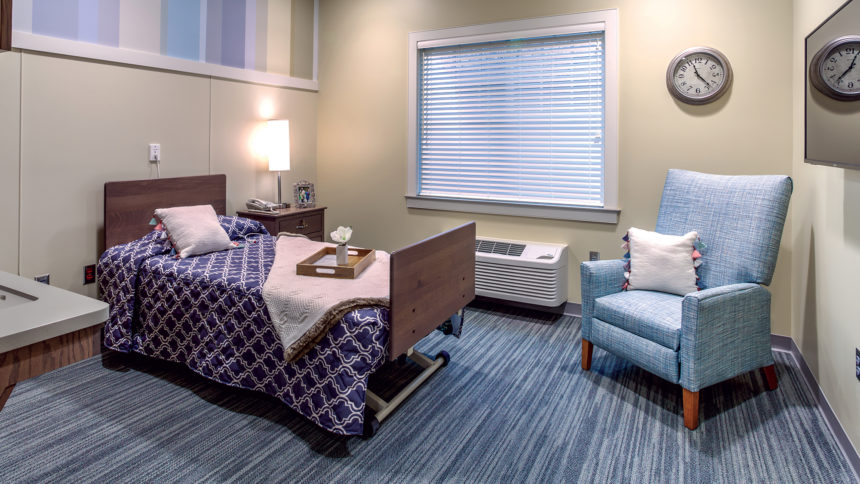Although Atrium Centers operates long-term care communities in four states, its Allendale Nursing and Rehabilitation Community outside Grand Rapids, MI, represents a blueprint of efficiency for the organization going forward.
In fact, Columbus, OH-based Atrium, which operates facilities in Michigan, Ohio, Kentucky and Wisconsin, has already duplicated the Allendale model for three of its newest projects.
Conceptually, the $3 million Allendale project started in late 2013 and lasted nearly three-and-a-half years before opening in February 2017. The four-phase process included a 13,400-square-foot rehabilitation addition, as well as various building renovations that include a new therapy gym, chapel, physician office, staff training room and conference room.
Dodd Kattman, principal with MKM architecture + design, says one of the main priorities for designing Allendale was “to create a new way of providing nursing care” for Atrium.
Meticulous study went into developing a master plan that would reduce staff travel times to supply and utility rooms, furthering the goal of fostering more hands-on care for residents.
“It was a new concept, so planning took longer than normal and we had a non-traditional timeline for the project,” Kattman says. “We wanted to create an open environment where staff members have awareness of their surroundings and don’t have to travel down long corridors. By cutting down distance from supply rooms and resident rooms, it reduces footsteps and allows for a much higher percentage of direct resident care.”
Allendale has the capacity for 60 skilled nursing and rehabilitation residents, with rooms arranged in small-home neighborhoods. Approximately half of available rooms are dedicated to short-term rehab patients, so the community now has the infrastructure to serve as a preferred post-acute provider organization, says Paul Gustafson, regional director for Atrium.
“The new rehab center has been a huge advantage for us – our transitional care volume has been through the roof,” he says.
“Grand Rapids is the largest managed care market in the state and this building has increased our managed Medicare referrals by 300%. And our 13-day average stay rate has proven attractive.”
Although he has no available data, Gustafson believes the efficient design has also reduced staff turnover and serves as a desirable place for prospective employees. “We have gotten amazing feedback from the staff,” he says.
The Allendale design also has another important purpose —enabling easy social engagement among residents, Kattman says.
“We are big believers that quality of life grows when people can create and maintain new relationships,” he says. “We are designing buildings that help to encourage and promote people engaging socially at their individual comfort level.”
Lessons Learned
1 Building design that reduces the number of staff footsteps helps facilitate more direct care with residents.
2 Rehab infrastructure that minimizes short-term patient stays can grow referral volumes.
3 Strategic seating placement in common areas can increase resident social engagement.
From the September 01, 2018 Issue of McKnight's Long-Term Care News




